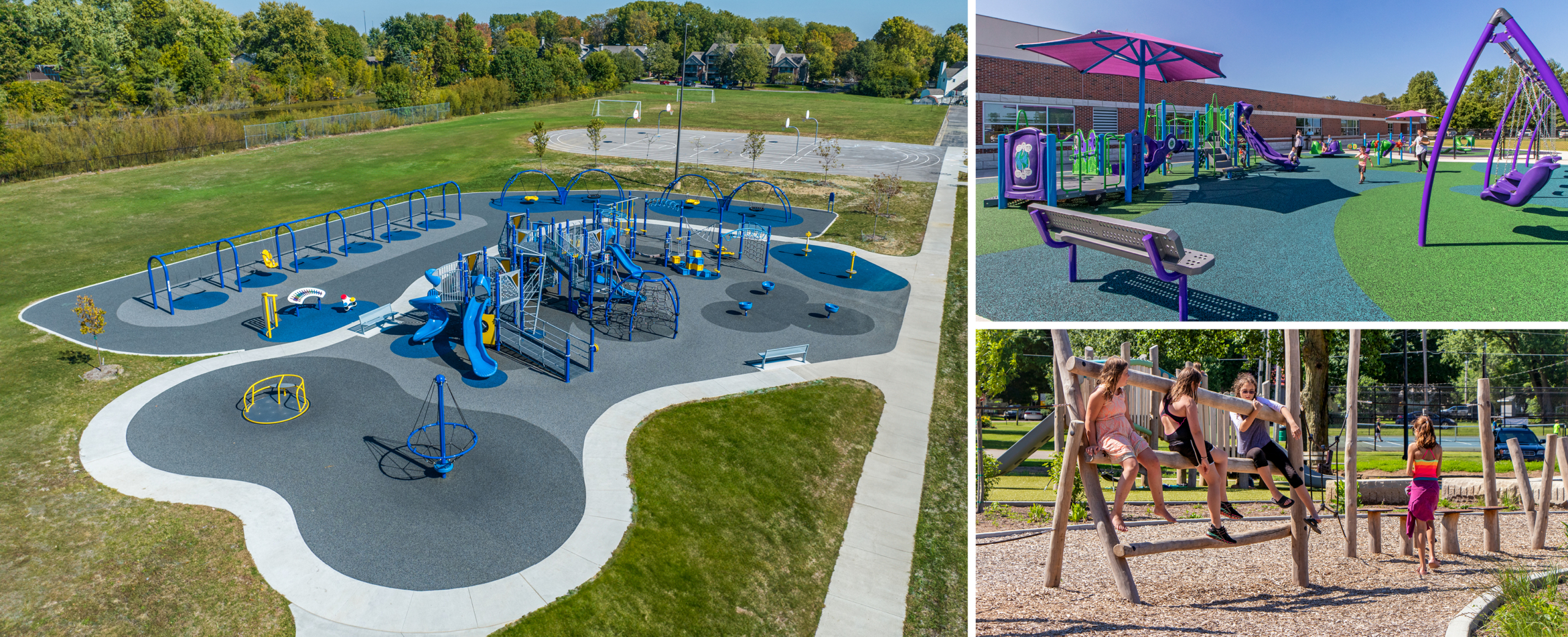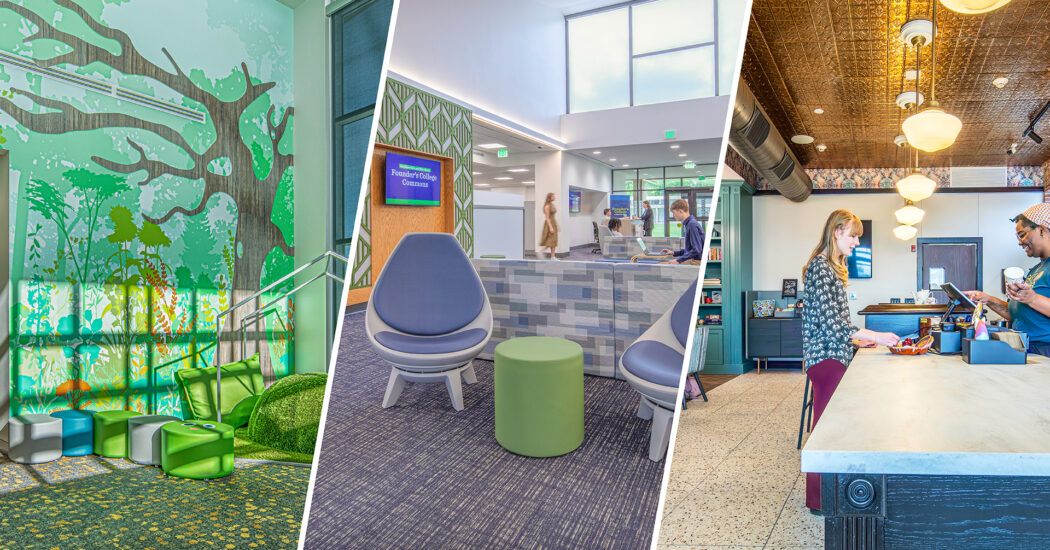Nurturing Growth With K-12 Playground Design: How Unstructured Play Leads to Positive Outcomes
-
Category
Studio-K12, Innovation -
Posted By
Craig Flandermeyer -
Posted On
Jan 09, 2024

In K-12 schools, playgrounds have long adhered to standardized equipment and predictable layouts. However, a revolution is underway, championing the integration of unstructured play opportunities, particularly those inspired by nature. The versatility of nature play transcends the boundaries of conventional playgrounds, offering a diverse array of possibilities that can be implemented anywhere–from personal yards to community green spaces. Let’s take a closer look at these unique places and discuss the benefits and challenges in further detail.

Nature Play Defined
According to thefirstfiveyears.org, nature play occurs when children are given opportunities to engage in unstructured play activities in outdoor settings with natural elements, such as logs, rocks and water, as opposed to conventional manufactured play equipment. Furthermore, the National Wildlife Federation states that when children play and learn in nature, they do so with more vigor, engagement, imagination, and cooperation than in wholly artificial environments, and that symptoms of attention deficit and depression are reduced. Experts agree that children need access to nature the same way they need good nutrition and adequate sleep.
One of the most compelling aspects of nature play is its adaptability. With natural materials, nature play can seamlessly coexist within areas of traditional playgrounds, they can take shape in community gardens, or be carved out spaces in a private backyard. These designs can be tailored to suit any need or budget, breaking down barriers that have traditionally hindered the adoption of unstructured play.
The Challenge
Despite the overwhelming evidence of its benefits, balancing these benefits with the perceived maintenance concerns remains challenging as many K-12 owners are unaware. This often holds them back over cost. Yet it’s crucial to recognize that the advantages far outweigh the challenges. Plus, with native plantings that do not require a lot of care and through expert-led design, these spaces can be designed to last a lifetime with less cost than what might be encountered with a traditional design.
The Studies
As the statistics from Children and Nature Network reveal, children today spend an alarming 44 hours weekly on screens, with outdoor play relegated to a mere fraction of that time. Yet, numerous studies underscore the profound positive impacts of nature play–from boosting STEM abilities to reducing anxiety, stress, and trauma. A 2015 study entitled “The Power of Nature: Developing Prosocial Behavior Toward Nature and Peers Through Nature-Based Activities” by Ibrahim Acar and Julia Torquati even unveiled a correlation between childhood exposure to nature and healthier adult lifestyles, as well as deeper empathy.
However, where racial and socio-economic disparities limit access to nature, green spaces, and unstructured play benefits are amplified even further.

Our Work
In this transformative landscape, the Schmidt Associates site team are experts in designing K-12 playgrounds that can integrate unstructured play. The Chen Family Lower School at the International School of Indiana stands as proof to this approach. Featuring two age-specific play spaces and a vast shared free-play environment representing the state of Indiana, the playground is a nuanced blend of education and play. With farm fields in the north, mounds in the south, and the Ohio River defining the space, the design incorporates a rock bed and interactive water feature. This water feature, a student favorite, cleverly disguises physics, biology, and ecology lessons as play.
The holistic design of the Chen Family Lower School playground also encourages physical, social, and cognitive play, enriching natural learning experiences. Steel arched tubes, adorned in the school’s colors, not only reinforce the playground’s natural learning theme but also infuse artistic expression and school spirit into the landscape.
With nature play as a catalyst for growth, our meticulous landscape architecture designs can transform the movement to create inclusive, and dynamic K-12 playgrounds. Let’s embrace the realm of unstructured play by cultivating environments that not only entertain but also nurture the minds and bodies of future generations.
Ready to incorporate nature play in your playground design? Let’s talk.
Craig Flandermeyer is a landscape architect with Schmidt Associates. Through his work, he seamlessly integrates a love for nature with expertise to encourage sustainability within every design. Craig’s key objective is to collaborate closely with Owners, advocating for sustainable integrations that require less maintenance and provide tangible benefits. Recognizing that long-term success and viability are crucial, he strives to find solutions that strike a balance between ecological sensitivity and practicality. By partnering with Craig, Owners can benefit from his expertise and contribute to a sustainable future.
*Landscape Architectural Graduates Krystlyn Lee and Stephanie Gates contributed to this blog.







